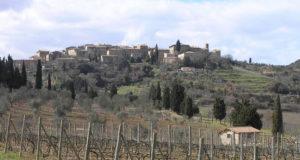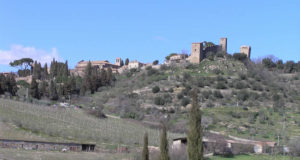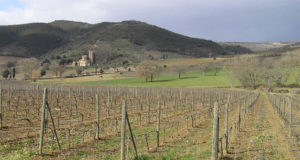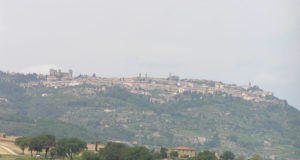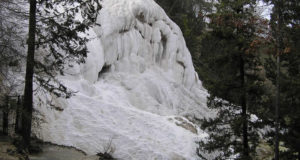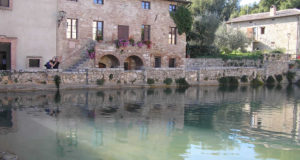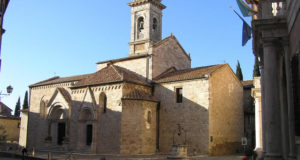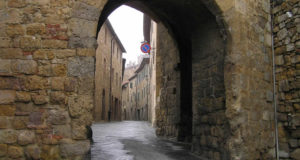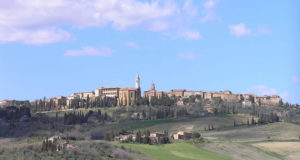Castelnuovo dell’Abate is a small settlement located about 389 meters above sea level in the municipality of Montalcino, in the Val d’Orcia. This village retains its medieval aspect intact. The town dominates the famous abbey of Sant’Antimo from the top of a hill and is immersed in a beautiful countryside with hills covered with olive trees, vines and cypresses. The ...
Read More »Monticchiello: a medieval village in the Val d’Orcia
Monticchiello is a small medieval town located halfway between Pienza and Montepulciano along a secondary road that joins the two locations. The town which is located at an altitude of 546 meters is still today partly surrounded by the ancient walls of the XIII century. The small village of Monticchiello is immersed in the beautiful hilly landscape of the Val ...
Read More »Abbey of Sant’Antimo: a Romanesque masterpiece
The Abbey of Saint Antimo is located about 18 km from Montalcino, near Castelnuovo dell’Abate. To get there take the road that from Montalcino goes toward Seggiano and Monte Amiata, shortly before arriving in Castelnuovo dell’Abate, turn right and you soon reach the Abbey. HISTORY Sant’Antimo is truly a beautiful abbey built in travertine, beautiful is also the landscape that surronds ...
Read More »Montalcino: the place of production of a famous wine
Montalcino is situated on a high hill between the valleys of Ombrone and Asso rivers at 564 meters above sea level. From Siena are about 40 km, along the SS. Cassia in direction of Rome. A few km after Buonconvento turns to the right following the indications for the city. HISTORY The first historical document that indicates the existence of ...
Read More »Bagni San Filippo: spas in the Val d’Orcia
Bagni San Filippo is a small spa village situated on the slopes of Mount Amiata 524 meters asl, in the municipality of Castiglione d’Orcia, in the province of Siena. The place name recalls the presence of San Filippo Benizi, prior of the Florentine religious order of the Servants of Mary, who in the twelfth century, according to tradition, took refuge in ...
Read More »Bagno Vignoni: a village with a particular square
Bagno Vignoni is a small village of medieval appearance, characterized by a group of houses and the enormous pool of water occupying the main square. The small cluster of houses was originally a castle of the family of Amerighi, already known in the eleventh century, today the remains of the castle (Vignoni Alto) dominate the high ground above the spa ...
Read More »Collegiate Church of San Quirico d’Orcia: Romanesque masterpiece
The building most interesting and enjoyable of San Quirico d’Orcia is undoubtedly the magnificent collegiate or parish church of Osenna (Saints Quirico and Giulitta), the church is starting out from the eighth century, but the current structure dates from the twelfth or thirteenth century. The oldest part seems to be that corresponding to the facade and in particular the main ...
Read More »San Quirico d’Orcia: fortifications, churches and gardens
San Quirico d’Orcia, located over 400 meters above sea level, is situated 45 km from Siena on SS. Cassia, to get there you pass through the villages of Monteroni d’Arbia, Buonconvento and Torrenieri, near the intersection to Pienza you arrive in San Quirico. Formerly the village was called San Quirico in Osenna. In medieval times it was quite important, so ...
Read More »Pienza: an ideal Renaissance city in Val d’Orcia
Pienza is a wonderful village that lies on a hill dominates the Val d’ Orcia at about 490 amsl. The small city is approximately 50 km from Siena and is reachable travel along the Cassia until San Quirico d’ Orcia and then following the indications for Pienza. Another road that can be used is the Siena-Bettolle exiting at Sinalunga and ...
Read More »Val d’Orcia: natural landscape modeled by man
In 2004, the Val d’Orcia was registered by UNESCO as a world heritage landscape area, with the following reasons: “… it is an exceptional example of how the natural landscape was redesigned in the Renaissance period to reflect the ideals of good governance and create an aesthetically pleasing image.” The landscape of this area of Tuscany is very beautiful. Renaissance ...
Read More » Borghi di Toscana Guida ai borghi e ai paesaggi della Toscana
Borghi di Toscana Guida ai borghi e ai paesaggi della Toscana
